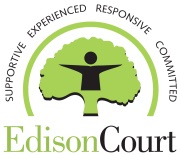
In what would become a highly influential essay in 1974, a time of political turmoil and change in the U.S., criminologist Robert Martinson asked, “Does anything work?” regarding rehabilitation efforts in the criminal justice world. Although he later published more optimistic findings, this “nothing works philosophy” had already set the stage for decades of belief that “broken” people don’t change and treatment doesn’t work.
Today, research has shown that adhering to scientific principles for helping troubled kids re-build their lives (i.e. those of risk, need, and responsivity) go the furthest in preventing further harm. Also known as the risk-need-responsivity model. these principles have explained the success and failure of numerous criminological interventions.
A principal criticism of the RNR model has been that its focus on criminogenic needs is a necessary but not sufficient condition for effective treatment (Ward & Gannon, 2006; Ward et al., 2007). The RNR model does not necessarily assist clinicians in choosing intervention styles that engage clients in treatment best. In particular, knowing or asserting that a focus on risk reduction is important does not necessarily ensure that a youth will be motivated to engage in treatment. The lack of motivation is an important responsivity factor in treatment. Given our annual five year recidivism research that has consistently demonstrated that ‘Program Completers’ recidivism rates were overall lower than those of their non-completer counterparts (Roberds, 2018, 2019, 2020) it is evident that interventions designed to better attend to offender responsivity concerns cannot be ignored.
There is little doubt that mandated clients who don’t like their circumstances become frustrated with the often slow pace of meaningful change. There is also little doubt that an empathetic approach as professionals is a good strategy overall. So often, however, when working with youth who have harmed others sexually there is an urge known as the “righting reflex”, our hard-wired propensity to recognize when something isn’t right and requires our attention and action. In the case of youthful sexual abusers this can lead to responding harshly to clients in the name of providing feedback or other messages designed to break through to them (read: hold them to limits).
To help build the capacity for our teens to respond and engage with us, the team at Edison Court employs Motivational Interviewing (MI), a collaborative conversation approach for exploring how and why a youth might change, grounded in a guiding style (as opposed to a directive or following style). MI has a strong evidence base, can reduce tension between staff and clients, and reduce client drop-out, and strengthen a youth’s own motivation and commitment to change.
To accomplish this we incorporate a Good Lives Model (GLM) framework. Underlying the GLM is the assumption that, to some extent, all individuals have similar basic needs and aspirations that they strive to meet and realize in their lives. From the GLM perspective, sexually abusive youth are viewed as seeking to achieve their personal priorities or values through whatever means are available to them, just like the rest of us. The difficulty is that their approaches are often counter-productive, ineffective, and/or socially un-acceptable. The Good Lives Model is a comprehensive, strength-based rehabilitation theory that focuses on promoting a youths’ personal goals while at the same time reducing their risk for future offending (Ward, Mann, & Gannon 2007).
It is a strength-based approach in two respects: (a) it takes seriously a youths’ personal preferences, values and goals and draws upon this understanding to motivate them to lead better lives; and (b) it equips youth with the capabilities and resources, to obtain primary goods in socially acceptable ways. Primary goods are basic needs and aspirations. The establishment of these capabilities needed to achieve primary goods (implementing a good lives plan -GLP) in socially acceptable and personally fulfilling ways can be both motivating by increasing engagement (responsivity) and directly alter criminogenic needs.
For example, youth at Mathom House are constructing a tiny, mobile classroom. Learning these carpentry skills in a personally engaging project can make it easier to develop concentration and emotional regulation skills, thereby reducing impulsivity, a criminogenic need in a way that our youth are strongly motivated by.
In our programs, we work to help youth gain a better understanding of themselves and increase interpersonal capacity with a goal of reducing risk of maladaptive behavior. Adolescents who harm others sexually very often have trouble connecting with those who are trying to help them and prevent further harm. As professionals we need specialized approaches designed to ensure the deepest impact. In this regard, MI and the GLM come in handy.

Add new comment